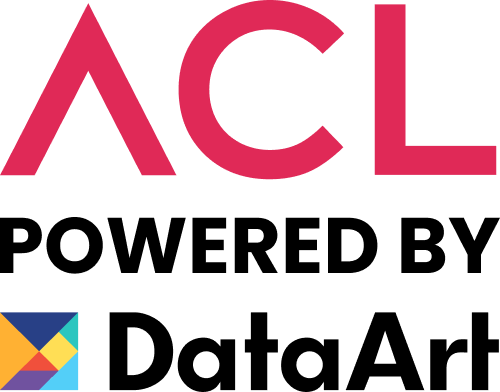Nearshore Software Development in Latin America: A Comprehensive Overview
Introduction
Nearshore software development refers to outsourcing software development tasks to teams in geographically close countries. This approach has become increasingly strategic for companies, especially those based in North America, seeking to outsource their software development needs. In this context, Latin America represents an ideal nearshore location due to its proximity to the United States and Canada. Latin America is a continent that has been familiar with remote work for over 20 years, but post-pandemic, the process of communication and remote work has multiplied, and many top Latin American developers now work online for significant companies around the world. Alongside project-based programs, collaborative work platforms, and a strong sense of agility, Latin America is positioning itself as a global reference in nearshore software development.
Key Advantages of Nearshore Software Development.
Geographical Proximity:
One of the primary advantages of nearshore development in Latin America is the reduced physical distance between the client and the service provider. This proximity allows for easier travel and face-to-face meetings, fostering better relationships and collaboration. Many companies used to choose more distant destinations for outsourcing work. Still, post-pandemic, many have decided to close gaps, improve access to meetings, and have spaces to share in dailies or retrospectives. This is when Latin America takes a leading position, with flights close to the United States and a time zone change that benefits both parties, making it a destination to consider. The time difference between the United States and Latin American countries varies, but it is generally minimal, especially compared to other popular outsourcing destinations like Asia or Eastern Europe. Here's a general overview of the time differences:
Eastern Time Zone (ET) - USA:
- Countries like Colombia, Peru, and parts of Brazil are either in the same time zone (ET) or just a few hours ahead. Argentina and Chile are typically 1 to 3 hours ahead of ET, depending on daylight saving time adjustments.
Central Time Zone (CT) - USA:
- Mexico, a significant player in nearshore development, aligns closely with CT, sharing the same time zone or just one hour ahead. Central American countries like Costa Rica, Guatemala, and Honduras are also in the CT zone.
Mountain Time Zone (MT) and Pacific Time Zone (PT) - USA:
- Countries in these time zones have a minimal time difference from the northern parts of South America. For instance, when it is noon in PT, it's only a few hours later in countries like Colombia and Peru.
These small differences facilitate real-time communication and collaboration, a significant advantage for agile project management and daily operations like stand-ups or progress updates. This aspect is precious in software development, where quick responses and iterative feedback are crucial for project success.
Cultural Affinities: ![]()
Latin America shares many cultural similarities with North America, particularly in business practices and work ethics. These shared cultural values and norms can lead to a better understanding and smoother interaction between teams, reducing the likelihood of miscommunication and cultural misunderstandings. While Spanish is the predominant language in Latin America, English proficiency is increasingly common, especially among IT professionals. This linguistic capability ensures more transparent communication, a crucial element in software development projects. One of the primary appeals of nearshore development in Latin America is cost-effectiveness. Labor costs in Latin American countries are generally lower than in the U.S. or Western Europe, but the quality of work is comparably high. This cost-benefit analysis makes Latin America attractive for companies seeking competitive pricing without compromising quality.
Technology Stacks
Latin America's tech talent pool is not only diverse and growing but also highly skilled in a variety of technology stacks. This versatility makes the region particularly strong in several programming languages and technologies. The countries in Latin America have been investing in their educational systems and infrastructure to nurture and develop top-notch tech professionals. As a result, they have become experts in various areas of technology.
These are just a few examples of the expertise and capabilities of Latin American countries in various technology stacks. The region's tech talent pool continues to grow and excel, making it an attractive destination for companies seeking highly skilled developers. With their diverse skill sets and proficiency in cutting-edge technologies, Latin American developers are well-equipped to tackle complex software development projects.
Expertise: Known for its robust software development industry, Brazil has a strong focus on Java and .NET frameworks. Brazilian developers are also skilled in PHP and Python. Brazil has a vibrant tech ecosystem with numerous tech startups and a strong culture of innovation, particularly in cities like São Paulo and Rio de Janeiro.
Expertise: Mexico's developers are known for their proficiency in JavaScript, particularly with frameworks like Angular and React. A significant talent pool is also skilled in PHP and mobile development (iOS and Android). The country has a robust technical education system, with universities producing many engineering graduates yearly.
Expertise: Argentina is noted for its Ruby on Rails and Python talent. It's also growing in the fields of AI and machine learning. Known for its creative and innovative approaches, Argentina has a strong presence of tech startups and an encouraging environment for technological research and development.
Expertise: Colombia has seen rapid growth in software development, with a focus on Java, .NET, and JavaScript. There is also emerging interest in cloud technologies and IoT. Colombia's government has actively supported the tech industry, leading to significant growth in tech companies and startups.
Expertise: Chilean developers are known for their skills in JavaScript and Python. There's also a growing interest in data science and analytics. Santiago, Chile's capital, is becoming a tech hub in the region, focusing on fostering innovation and tech entrepreneurship.
Expertise: Uruguay's tech sector is known for software development, particularly in Java and PHP. There's also a growing focus on fintech solutions. Uruguay is one of Latin America's most digitally advanced countries, home to several tech parks and incubators.
The most read!
How do you find a Nearshore Software Development provider?
Finding a nearshore software development provider, particularly in Latin America, involves a strategic approach encompassing research, evaluation, and careful consideration of your project needs. Here are some steps and tips to guide you in this process:
- Define Your Requirements
Project Scope: Clearly define what you need regarding technology stack, project size, and complexity. This will help you find a provider with the right expertise. Budget and Timeframe: Understand your budget constraints and timeline. This will narrow down providers that can meet your financial and scheduling needs.
- Research Potential Providers
Online Platforms: Utilize platforms like Clutch, GoodFirms, or LinkedIn to find and compare software development companies. These platforms offer ratings, reviews, and detailed profiles. Network and Referrals, leverage your professional network. Ask for referrals from business associates with nearshore development experience in Latin America.
- Evaluate Technical Expertise and Experience
Portfolio and Case Studies: Review their previous projects and case studies to assess their expertise in technologies and industries relevant to your project. Look for client testimonials and consider contacting their previous clients for direct feedback.
- Consider Cultural and Communication Compatibility
Language Proficiency: Ensure the team has adequate English proficiency or any other language required for your project. Evaluate their understanding and compatibility with your business culture and work ethics.
- Assess their Approach to Project Management
Methodologies: Look for providers experienced in Agile, Scrum, or other methods that align with your project management style. Ensure they have effective communication tools and practices, such as regular video calls, project management tools, and status updates.
- Discuss and Understand Their Pricing Model
Cost Structure: Understand their pricing model – fixed-price, time and materials, or a hybrid. Ensure it aligns with your budget and project flexibility.
- Legal and Compliance Check
Contracts and Agreements: Ensure they have clear contracts outlining project scope, deliverables, timelines, and confidentiality agreements. Data Security and IP Protection, verify their adherence to data security norms and intellectual property laws.
- Conduct a Pilot Project
Start with a small pilot project to evaluate their capabilities, communication, and deliverability before committing to a more extensive engagement. Look for a provider who is interested in building a long-term relationship rather than just completing a one-off project.
Cost Efficiency of Partnering with Latin American Developers
One of the most compelling reasons to engage with Nearshore Software Development in Latin America is the balance they offer between affordability and quality. Countries like Mexico, Brazil, and Argentina provide access to a rich talent pool at a fraction of the cost of North American or Western European markets. This affordability stems from the lower price of living and operational expenses in these regions.
Reduced Overhead Costs: Outsourcing to Latin America can significantly reduce overhead costs for companies. This includes savings on office space, equipment, and other resources that would otherwise be required for an in-house team. Additionally, the cost of employee benefits and administration is minimized. Startups and established companies find this cost efficiency advantageous when scaling up. The ability to ramp up a development team without incurring substantial financial burdens is a crucial factor in agile and responsive business growth.
Conclusion and final thoughts
In conclusion, nearshore software development, particularly in Latin America, is emerging as a highly strategic and effective approach for North American companies looking to outsource their software development. The geographical proximity, cultural alignment, and the extensive experience of Latin American developers in remote work, especially post-pandemic, have significantly enhanced the appeal of this region. Latin America's adoption of collaborative work platforms, project-based programs, and a strong focus on agility positions it as a global leader in the nearshore software development sector. This trend underscores the growing importance of nearshoring in the global tech landscape.
If you're considering hiring nearshore software development services, do it with specialists at ACL. We have over 200 clients who trust in nearshore software development daily. For more than 30 years, we have been providing these services, showcasing our experience and expertise in the field.

Our long-standing record in delivering high-quality software solutions and our deep understanding of the unique needs and challenges associated with nearshore projects makes us a reliable partner for your software development needs. Our team of skilled professionals is equipped to handle complex projects, ensuring that we deliver innovative, efficient, and cost-effective solutions. Choose ACL for a partnership that combines experience, trust, and cutting-edge technology in nearshore software development.
FAQ - Need Clarification?
What is nearshore software development?
Nearshore software development is the practice of outsourcing software development projects to companies in neighboring or nearby countries, typically sharing a similar time zone and cultural similarities. This model facilitates easier communication, collaboration, and project management compared to more distant offshore outsourcing.
What are the key advantages of nearshore software development?
Key Advantages of Nearshore Software Development: Nearshore software development offers several advantages, such as similar time zones, which facilitate real-time communication and collaboration. Cultural similarities and geographical proximity also enhance understanding and efficiency. Additionally, nearshore development can provide cost savings compared to onshore development while offering a higher quality of service and better communication than some offshore options.
What are the benefits and challenges of nearshore development in Mexico?
Benefits and Challenges of Nearshore Software Development in Mexico: The benefits of nearshore software development in Mexico include cultural and time zone alignment with North American clients, a growing pool of skilled developers, and competitive pricing. The challenges might include navigating different business practices and legal frameworks, as well as ensuring consistent quality standards. Additionally, language barriers, though less significant than in some offshore locations, might still be a consideration.
What are common services offered by nearshore software developers?
Commonly Offered Nearshore Software Development Services: Nearshore software development services often include custom software development, mobile app development, web development, and cloud solutions. They may also offer specialized services like UI/UX design, quality assurance and testing, system integration, and support and maintenance services. Advanced services like AI and machine learning development, and IoT solutions are also increasingly included in the offerings of nearshore companies.
Recent Posts








